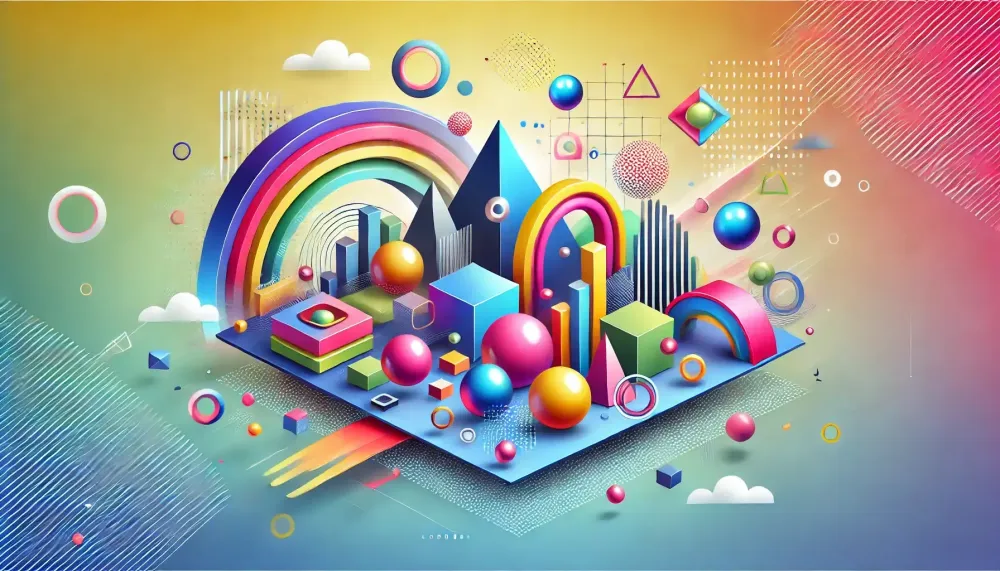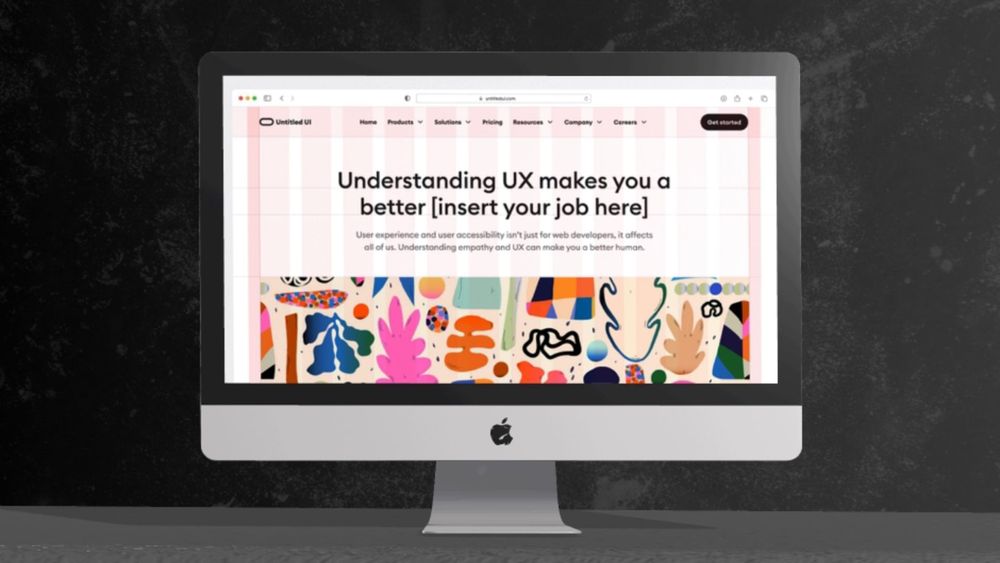Mastering graphic design skills is a valuable asset in today's visual-centric world. Whether you are a beginner or looking to enhance your existing abilities, understanding the fundamentals of graphic design is crucial. From typography and color theory to layout and composition, honing your graphic design skills can significantly impact the quality of your work.
In this comprehensive piece, we will delve into various aspects of graphic design skills, providing practical tips and insights to help you elevate your design capabilities. So, whether you're creating a logo, designing a website, or crafting a poster, enhancing your graphic design skills is key to producing visually appealing and effective creations.
Core Technical Skills
Layout and Composition
Understanding layout and composition is essential for creating visually appealing designs. A well-composed layout ensures that elements are arranged in a way that is aesthetically pleasing and functional. Begin by understanding the rule of thirds, which divides the design space into a 3x3 grid, helping to balance elements effectively. Additionally, consider the hierarchy of your design. This involves arranging elements to guide the viewer's eye through the content in a logical order. Use white space strategically to avoid clutter and improve readability. Aligning elements consistently also enhances the overall harmony of your design.
By focusing on these principles, you can create layouts that not only capture attention but also convey your message clearly and effectively.
Color Theory
Proficiency in color theory is fundamental to enhancing your graphic design skills. Color theory involves the study of how colors interact and the visual effects they create when combined. Start with the color wheel, which helps you see relationships between primary, secondary, and tertiary colors. Use complementary colors to create contrast and draw attention, while analogous colors can provide harmony and a cohesive look. Be mindful of color psychology, which suggests that different colors evoke different emotions and reactions. For instance, blue can convey trust and calm, while red can signify urgency and excitement. Balance the color choices to ensure they align with the message and mood you want to communicate.
By mastering color theory, you can make more informed decisions that enhance the impact of your designs.
Typography Skills
Typography is a critical aspect of graphic design skills, influencing readability and the overall aesthetic of your work. To start, choose fonts that complement each other and suit the design's purpose. Pairing a serif font with a sans-serif font often creates a balanced and dynamic look. Pay attention to hierarchy by using different font sizes, weights, and styles to guide the viewer's eye through the content. Leading, or line spacing, and kerning, the space between characters, should be adjusted to enhance readability. Avoid using too many fonts in one design to prevent it from looking cluttered and unprofessional. Consistency is key; use the same fonts and styles throughout your project to maintain a cohesive look.
By knowing these typography techniques, you can significantly improve technical typography skills and the clarity and visual appeal of your designs.
Navigating Adobe Creative Suite
Navigating Adobe Creative Suite is vital for any graphic designer aiming to enhance their skills. This suite includes essential tools like Photoshop, Illustrator, and InDesign, each catering to different aspects of design. Photoshop is perfect for photo editing and creating raster graphics, while Illustrator excels in vector graphics, making it ideal for logos and illustrations. InDesign is the go-to for layout design, particularly for print materials like brochures and magazines.
Familiarize yourself with the workspace and tools of each program. Take advantage of online tutorials and courses to learn shortcuts and advanced techniques. Understanding how to effectively use these tools can streamline your workflow and expand your creative possibilities.
By mastering Adobe Creative Suite, you can take your graphic design projects to the next level, ensuring professional and polished results.
Exploring Alternative Design Software
While Adobe Creative Suite is a powerful tool, exploring alternative design software can broaden your skill set and provide cost-effective solutions. Programs like Affinity Designer, Sketch, and Canva offer unique features and user-friendly interfaces that cater to different design needs. Affinity Designer is a robust vector graphic design software with a one-time purchase model, making it a budget-friendly option. Sketch is popular among UI/UX designers for its intuitive interface and collaborative features. Canva, on the other hand, is ideal for quick, template-based designs and social media graphics, requiring minimal design expertise.
Each software has its pros and cons, so it's beneficial to experiment with different tools to find what best suits your workflow. By diversifying your proficiency in various design software, you can adapt to different project requirements and enhance your versatility as a graphic designer.
Generating Ideas and Brainstorming
Generating ideas and brainstorming are foundational steps in the creative and graphic design process. Start by defining the problem or objective clearly to give your brainstorming session a focused direction. Use techniques like mind mapping to visually organize your thoughts and see connections between ideas. Group brainstorming sessions can also be valuable, as they allow for diverse perspectives and collaborative thinking.
Don't shy away from unconventional methods like drawing inspiration from unrelated fields or using random word generators to spark creativity. It's crucial to create an environment that encourages free thinking and minimizes judgment during the brainstorming phase. Document all ideas, no matter how far-fetched they may seem, as they can lead to innovative solutions or inspire other concepts.
By mastering these techniques, you can enhance your ability to generate unique and effective design ideas.
From Draft to Final Design
Transitioning from draft to final design involves several key stages that refine and perfect your work. Start with rough sketches or wireframes to outline your initial concepts. These drafts don't need to be detailed; they serve as a foundation for your design. Next, create more polished drafts, incorporating feedback and making adjustments as needed. It's essential to review and revise your work multiple times to catch any inconsistencies or areas for improvement.
Utilize design principles like alignment, contrast, and proximity to enhance the overall composition. As you move towards the final design, pay close attention to details such as color choices, typography, and visual hierarchy. Conduct a final review to ensure that all elements are cohesive and aligned with the project objectives.
By systematically refining your drafts, you have become a graphic designer who can produce a final design that is both visually appealing and effective in communicating your intended message.
Web and UI/UX Design
Web and UI/UX design are integral to creating engaging and user-friendly digital experiences. Start by understanding the user's needs and behaviors through research and user personas. This insight will inform your design decisions and help you create intuitive interfaces. Focus on creating a clear and logical layout that guides users smoothly through the site or application. Pay attention to visual hierarchy, ensuring that important elements stand out and are easily accessible. Usability is key, so prioritize responsive design to ensure the interface works well on various devices and screen sizes. Incorporate feedback loops and usability testing to identify and address any issues. Use design patterns and components consistently to create a cohesive experience.
By mastering these essentials, you can design websites and applications that are not only visually pleasing but also highly functional and user-centric.
Essential Soft Skills for Graphic Designers
Branding Skills
Branding and identity design are crucial for establishing a company's visual presence and communicating its values. Start by understanding the brand's mission, values, and target audience. This foundational knowledge will guide your design choices and ensure they align with the brand's identity. Develop a consistent visual language, innovative ideas, including a logo, color palette, typography, and other graphical elements. Each component should work together to create a cohesive and recognizable brand image. Pay attention to how these elements are used across various touchpoints, such as business cards, websites, and social media profiles, to maintain consistency. Incorporate feedback from stakeholders to refine your designs further.
By focusing time management on branding and identity design, you can help create a strong, memorable brand that resonates with the audience and stands out in the marketplace.
Embracing Emerging Trends
Embracing emerging trends is essential for staying relevant in the ever-evolving field of graphic design. Keeping up with trends allows you to infuse fresh ideas into your work and meet contemporary aesthetic standards. Start by following industry blogs, social media accounts, and design publications to stay informed about what's new. Attend webinars, workshops, and design conferences to gain insights from industry leaders. Experiment with new styles and techniques, such as 3D design, minimalism, or the use of bold typography, to expand your creative toolkit. Incorporate trends thoughtfully, ensuring they align with the project's goals and brand identity. It's also beneficial to understand the underlying principles driving these trends, as this knowledge can help you innovate rather than simply imitate.
By staying current with emerging trends, you can keep your designs modern, engaging, and competitive in the digital design marketplace.
Continuous Learning and Skill Development
Continuous learning and skill development are vital for maintaining and enhancing your graphic design skills. The design industry is dynamic, with new tools, techniques, and trends emerging regularly. To stay ahead, commit to lifelong learning. Take online courses and tutorials to deepen your knowledge in specific areas, such as advanced typography or motion graphics. Join design communities and forums to exchange ideas, seek feedback, and stay inspired. Reading books and articles on design theory and practice can provide new perspectives and insights. Experiment with personal projects to apply what you've learned and explore new styles. Networking with other designers as a form of communication skills can also offer opportunities for mentorship and collaboration.
By dedicating time to continuous learning, you not only keep your skills sharp but also open up new opportunities for growth and innovation in your graphic design career too.




